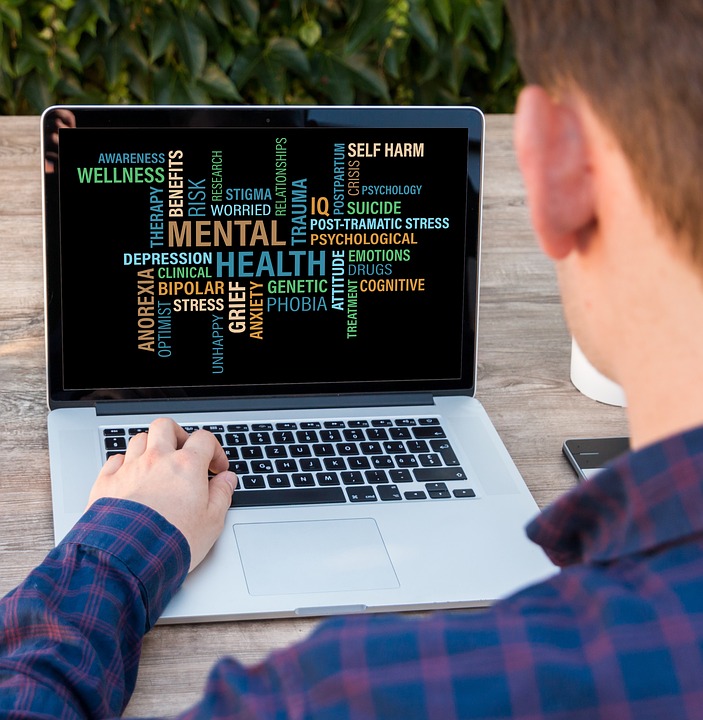
Image courtesy of Pixabay.com
Mental health advocates may now officially have something else to worry about. In the latest revision to its disease classification manual, the World Health Organization (WHO) states that compulsive video game playing now qualifies as a mental health condition.
By treating “gaming disorder” as its own separate addiction, WHO claims that it should serve as a help for families, friends, spouses, health care professionals, and governments to be more aware of the associated signs and risks involved. Don’t be too alarmed, however (at least not yet), as WHO and other professionals have clarified that incidence of the disorder is to date very rare, with the belief that less than 3 percent of all gamers are affected.
The trend seems to be on the rise, however, as the existing scientific evidence has been compelling enough to convince WHO to approach gaming disorder (also known as gaming addiction) as its own problem. There appears to be adequate demand for the disorder’s treatment in some parts of the world. You may already know someone or know of someone’s child who spends countless hours getting wrapped up and consumed playing violent role-playing games like “Fortnite.”
While there are those that express concern about the new classification being “something else to worry about,” a sizable contingent of interested parties welcome WHO’s assessment, claiming the critical necessity of identifying as soon as possible those who are addicted to video games, in order to get them help.
Should this be of concern? It’s been pointed out that compulsive gaming/gaming addiction could be a symptom of something deeper that needs to be addressed, such as depression, anxiety, or obsessive-compulsive disorder (OCD).
Some studies suggest that when individuals are engaged in playing online or other video games, certain pathways in the brain are triggered in an intense and direct way, similar to the way that the brains of drug addicts are manipulated by their substance of choice – in other words, gaming can set off a neurological response that influences the mechanism of enticement, pleasure, and reward. In severe cases, this dynamic has manifested itself as strikingly similar to the uncanny pattern of addictive behavior.
What is an addiction?
For the vast majority of people, video games are more about entertainment and novelty. Take the fad game “Pokemon Go,” for example. Even if most people play games like “Pokemon Go” a lot, it’s just a passing “phase,” more than anything, and when they get bored with the trend, they’ll just get on with their lives. No addiction. Others are not so fortunate.
Most people associate addiction with substances (usually alcohol or drugs), and maybe with some behaviors, such as compulsive gambling and compulsive promiscuity. Here are a few possible criteria for what could be considered to be an “addiction” in the context of psychology, psychiatry, and mental health:
- An individual continues to need more and more of a substance (or behavior) to keep him or herself going/engaged/entertained.
- If the individual runs out of the substance/behavior, he or she becomes unhappy and irritable.
- When in doubt, the quick definition of an addiction is: When an individual continues to indulge him or herself with a substance or behavior, even when that person is aware that it is detrimental and harmful.
Gaming likely meets these criteria, with many reports of severe withdrawal symptoms in game addicts. Episodes of aggression, anger, depression, and even violence have been reported.
What’s the big deal?
Gaming addiction is typically associated with teenagers, but it can be just as harmful to adults. Compulsive gaming for adult video game addicts can hinder job or school performance and can be harmful to relationships.
Many adult gamers often skip social engagements, work, meals, and sleep.
Be mindful of addiction warning signs
Remember that most people who play video games, even if they seem to play them a lot, don’t develop an addiction to them. Parents and friends of video gamers should be mindful and watchful for warning signs of potentially detrimental problems. Some warning signs of gaming addiction include:
- Gaming for ever-increasing amounts of time
- Declining performance at school or work
- Playing video games to escape from real-time problems, depression, or anxiety
- Thinking about and talking about gaming at other times throughout the day
- Lying to friends and family to hide gaming
- Becoming irritable when having to cut down on time playing video games
If someone’s gaming time appears to be taking over his or her life, when someone’s normal routine is consistently disrupted (e.g., schoolwork, socializing, work), then it may be time to seek professional help.
Do you or someone you know struggle with an addiction to video games? Behavioral addiction is treatable and manageable. If you or someone close to you need to talk to someone about behavioral/compulsive addiction or mental health issues that seem overwhelming, we can help. Consider reaching out to our expert team at Solara Mental Health at 844-600-9747.











 Ever have one of those moments when a friend or family member starts talking about a mental illness that he or she deals with? And you find you don’t know exactly what to say, so you quickly shift to canned, “fallback” statements?
Ever have one of those moments when a friend or family member starts talking about a mental illness that he or she deals with? And you find you don’t know exactly what to say, so you quickly shift to canned, “fallback” statements?


